 |
 |
 |
| |
Correlates of HIV, HCV and HIV/HCV Co-Infection in a Northeastern Inner City Population
|
| |
| |
Reported by Jules Levin
IDSA Oct 17-21 2012 San Diego
Jamie P. Morano, MD, MPH Britton A. Gibson, MPH Frederick L. Altice, MD, MA
Yale University Department of Internal Medicine,
Department of Infectious Diseases, Yale University AIDS Program
Program Abstract:
Correlates of HIV, HCV and HIV/HCV Co-Infection in a Northeastern Inner City Population
Jamie P. Morano, MD, MPH
Britton A. Gibson, MPH
Frederick L. Altice, MD, MA
Yale University Department of Internal Medicine,
Department of Infectious Diseases, Yale University AIDS Program
Background: Individuals at high risk for HIV and HCV are difficult to identify in traditional medical systems due to recurrent substance use, chaotic lifestyles, and comorbid mental health conditions.
Methods: Utilizing a mobile medical clinic (MMC) in New Haven, CT from 2003 to July 2011, a total of 8,312 individuals underwent structured health assessments and routine HIV and HCV testing; 601 (10.1%) and 753 (12.7%) were newly identified as HIV+ and HCV+, respectively. Among the 753 with HCV infection, 197 (26.1%) were co-infected with HIV. Multivariate logistic regression assessed the correlates of HIV mono-infection, HCV mono-infection, and HIV/HCV co-infection.
Results: Among the 8,312 MMC clients, drug use by injection [n=1,235 (14.9%)], ever heroin use [n=1759 (21.0%)], ever crack cocaine use [n=2190 (26.3%)], and methamphetamine use [n=274 (3.3%)] were common. Those reporting engaging in commercial sex work (CSW) [n=1317 (15.8%)], being a victim of domestic violence [n=1047 (12.6%)], being incarcerated in the past 6 months (n=1263 (15.2%)], and self-reporting as men who have sex with men (MSM) [n=189 (2.3%)] and women who had sex with women (WSM) [n=203 (2.4%)] were also frequent. Nearly 21.0% of total respondents (n=1737) reported a mental health comorbidity.
Independent correlates of HIV mono-infection included MSM (AOR=7.9, p<.001), crack cocaine use (AOR=1.9, p<0.001), and history of syphilis (AOR=2.5, p<0.001), while independent correlates of HCV mono-infection included injection drug use (AOR=10.1, p<.001), heroin use (AOR=4.0, p<.001), and crack cocaine use (AOR=2.1, p<.002). HIV/Hepatitis C co-infection was correlated with injection drug use (AOR=13.1, p<.001), MSM (AOR =3.9, p<.007), CSW (AOR=1.9, p<.045), heroin use (AOR=2.0, p<.027), and methamphetamine use (AOR=2.2, p<.017).
Conclusion: A culturally competent mobile medical clinic in urban settings is effective for reaching a large number of individuals at high risk for HIV and Hepatitis C, including MSM, injection drug users, and those participating in commercial sex work. Domestic violence and sexual assault deserve more attention in future studies for HIV and Hepatitis C risk factors.
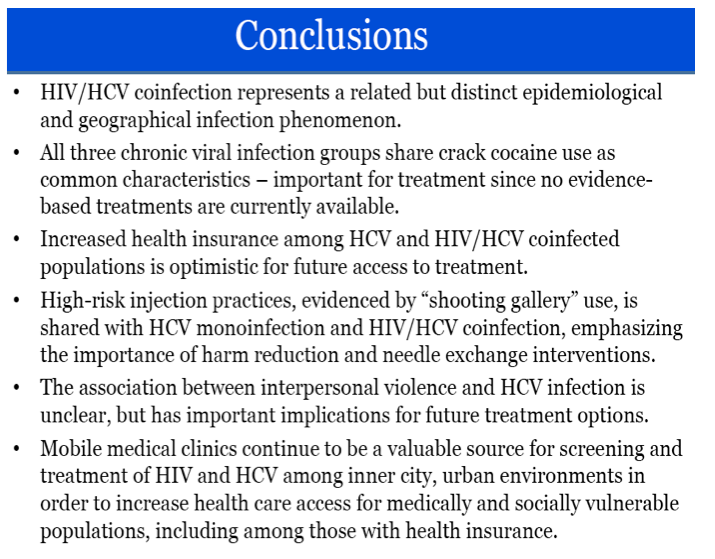
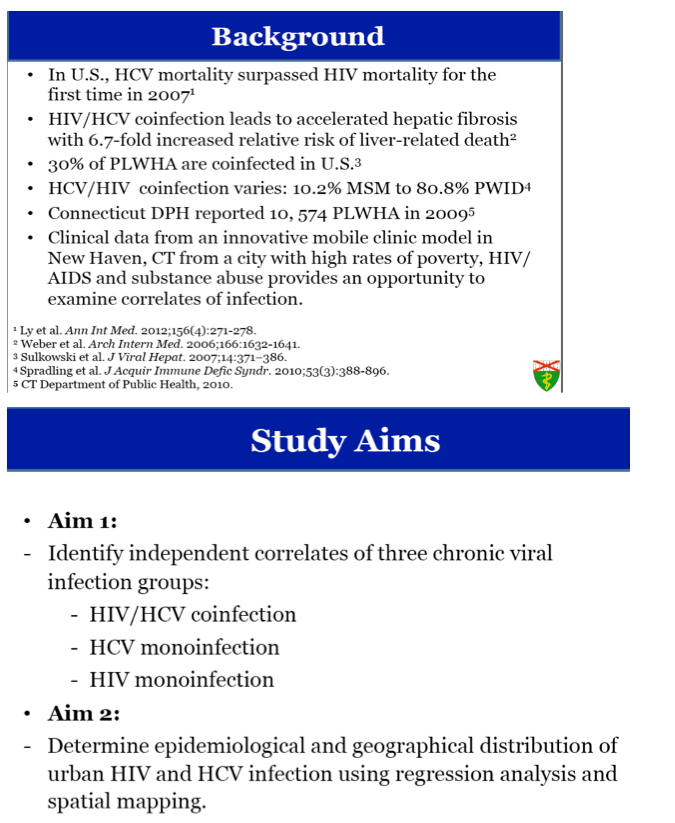
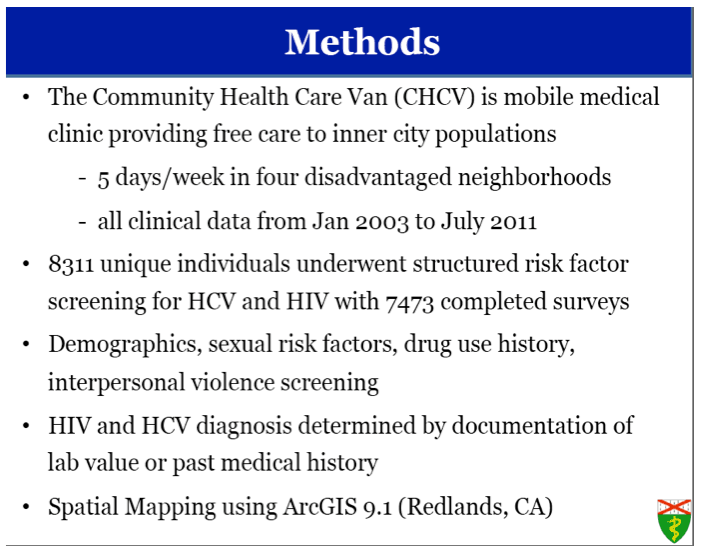

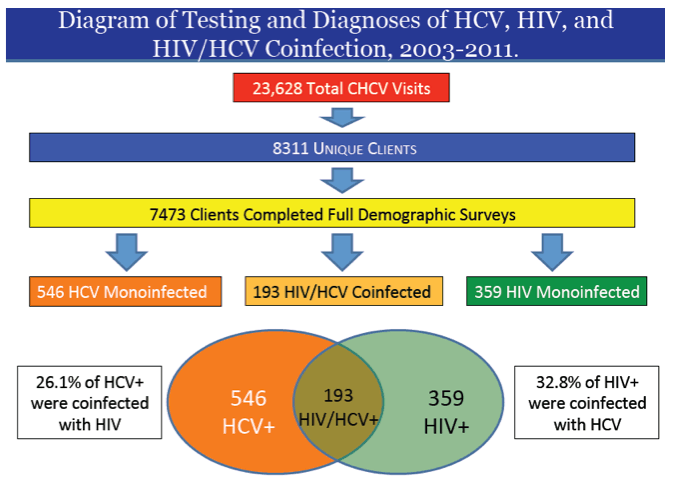
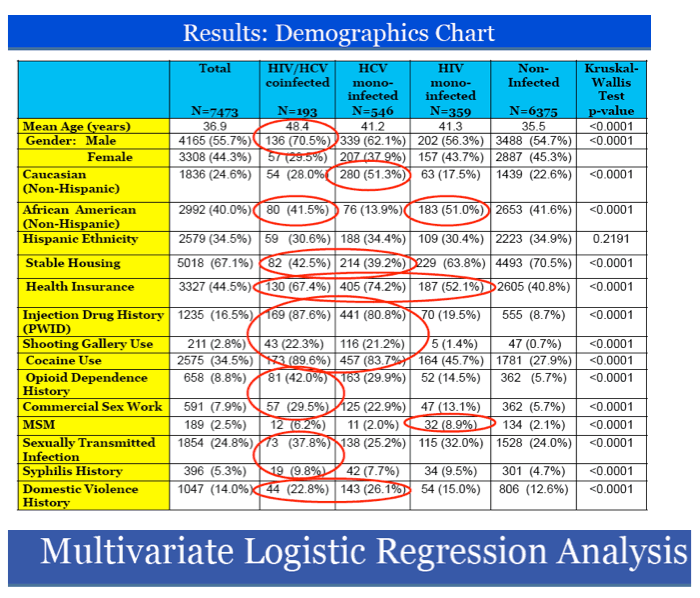
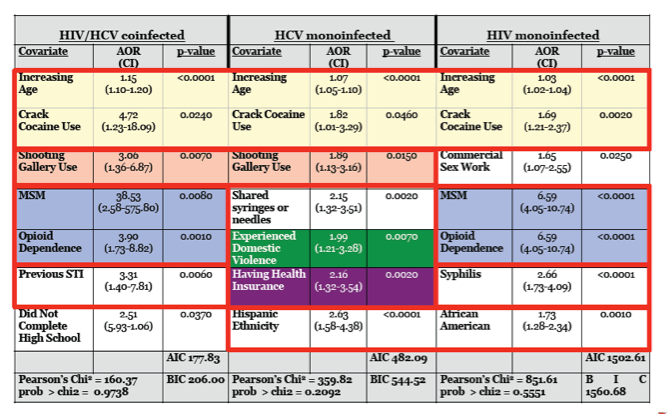
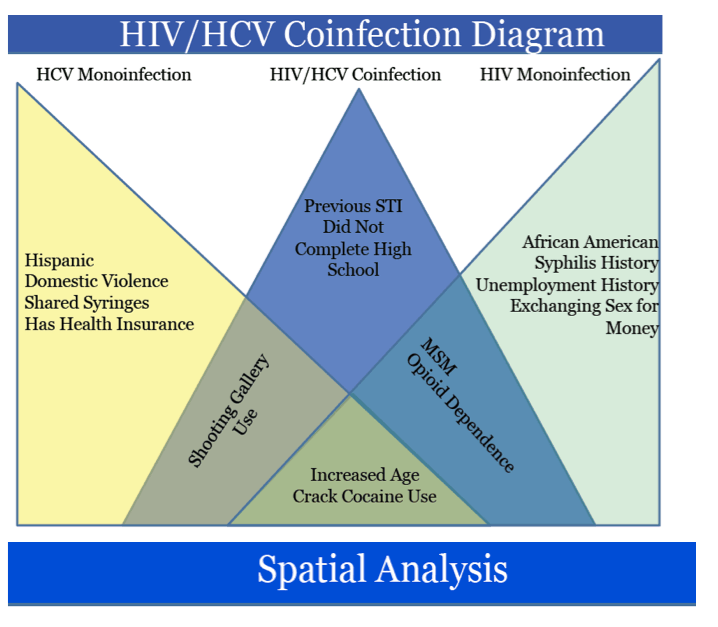
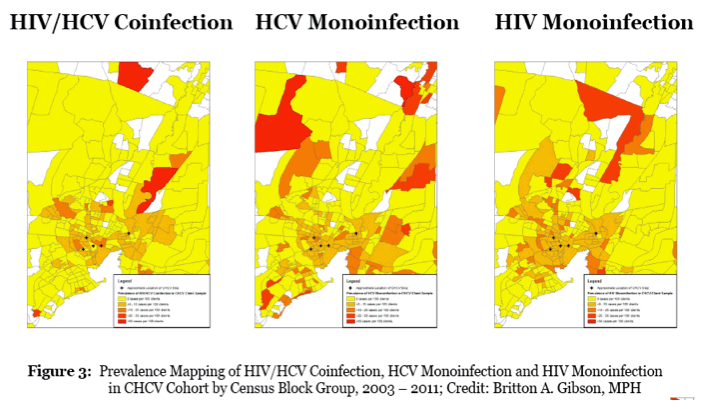
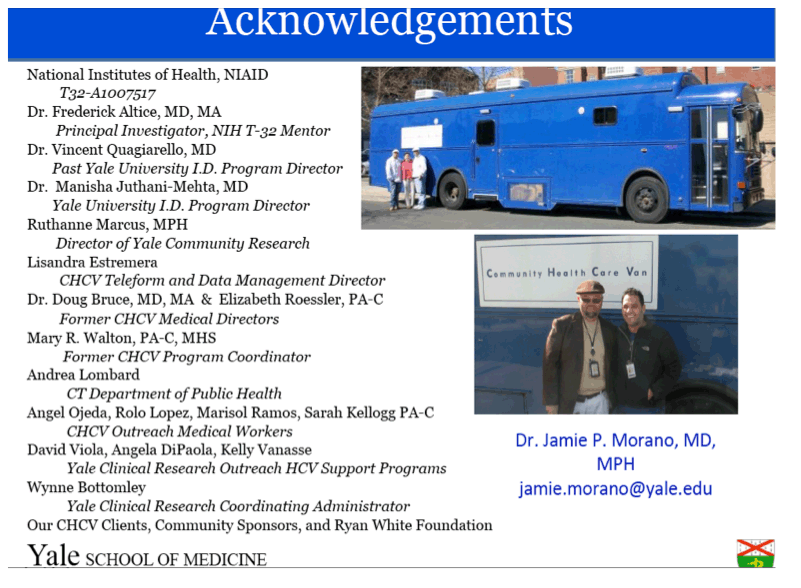
|
| |
|
 |
 |
|
|